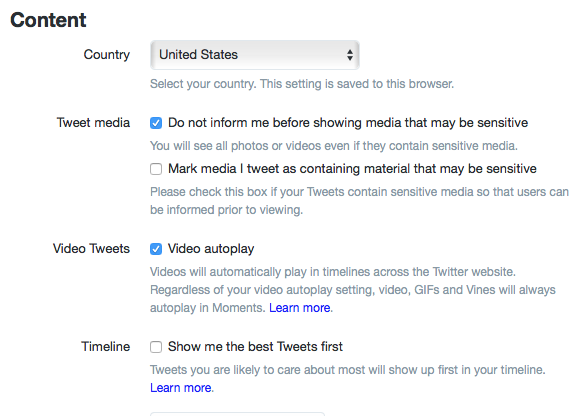Hate it when social networks tinker with your timeline? You’d hate it more if they didn’t

If it hasn’t already started to do so, a new Twitter algorithm — announced in early February — will soon decide which tweets top your timeline. Fearless forecast: However Twitter implements that “best Tweets” filter, many of those tweets will express annoyance at this interference.
From the way the phrase “algorithmic timeline” causes steam to billow from the ears of many social-media regulars, you’d think they all flunked out of algebra in high school — and years later, resent the experience so much they’re still subtweeting their teachers.
Twitter says it’s doing this not to annoy its users but to honor their interests. It will highlight tweets “you are likely to care about most,” a support note says. “We choose them based on accounts you interact with most, Tweets you engage with, and much more.”
But being suspicious of an undocumented set of formulas that filter our online experience — see, for example, the anxiety that Instagram users are expressing over that service’s impending switch to an algorithmic timeline — isn’t completely paranoia.
Facebook has us all spooked
The single biggest social network, Facebook, has a long and unhappy history of inserting its own automated judgment into what members see in their news feeds.
At their least harmful, the formulas that fill its “Top Stories” ranking of your feed ignore obvious chronological cues and instead, for example, park a friend’s update from the fourth inning of a baseball game above one from the ninth and yet another one from the second.
But at its worst, this filtering led some Facebook users to wonder why they saw so much more discussion of 2014’s unrest in Ferguson, Mo., on Twitter than on their own social network.
You can turn off Facebook’s algorithmic filtering — it’s easiest to do on its website, where you click the triangle to the right of News Feed and choose Most Recent — but that only offers a temporary respite. As Facebook’s online help explains: “News Feed will eventually return to the default Top Stories setting.”
Spam and abuse are real problems
If only we could have the natural simplicity of a purely newest-to-oldest, chronological timeline — right? We can all grasp that without special training.
Unfortunately, in the context of social media “we” generally doesn’t stop at the people whose input we value. The networks we inhabit can be invaded by spammers or abusers, and so can the accounts of friends and family.
Once a social network gets past a certain scale, it needs some sort of automated enforcement to catch and stop this kind of abuse before it gets too rewarding for the crooks, con artists, and serial harassers. (See, for example, the pioneering and long-gone online forums of Usenet, which lacked any such centralized enforcement.)
Why can’t the sites filtering out abuse and spam at least publish their rules for doing so? Because then the crooks and jerks would figure out ways to work around them — much as they keep trying to game Google’s own, unpublished search algorithms.
And if these sites then decide to use some of this same filtering technology to offer a more personalized, less random experience that will get people to stick around longer and therefore see more ads, it shouldn’t come as a huge surprise. Remember, Twitter is a publicly traded company with shareholders who sometimes seem to have Twitter confused with Facebook, a far bigger and more profitable company.
We do need to keep an off switch
Fortunately, Twitter has so far provided one thing that Facebook does not: a functioning off switch. If you’re already seeing its “best Tweets” selection — my own informal survey suggests only a minority of you may be — you can opt out of that at Twitter’s site and in its iOS and Android apps.
Twitter’s interfaces for this setting are inconsistent; as that Help note explains, it’s two clicks from your home timeline on the Web, three taps away in Android, and five taps away in iOS. But changing the setting does seem to stick, allowing users to spend time in either a filtered and unfiltered version of Twitter and see which one they prefer.
(I have to admit that I’ve yet to see a significant difference either way. Maybe I’ve already internalized Twitter’s own priorities?)
Making that less-personalized perspective optional — see also the Google search setting to display results that don’t reflect Google’s estimation of your interests — needs to remain a priority at Twitter.
If it doesn’t, I’ll have a different opinion of its filtering, which I will share on Twitter, and which you may or may not see.

